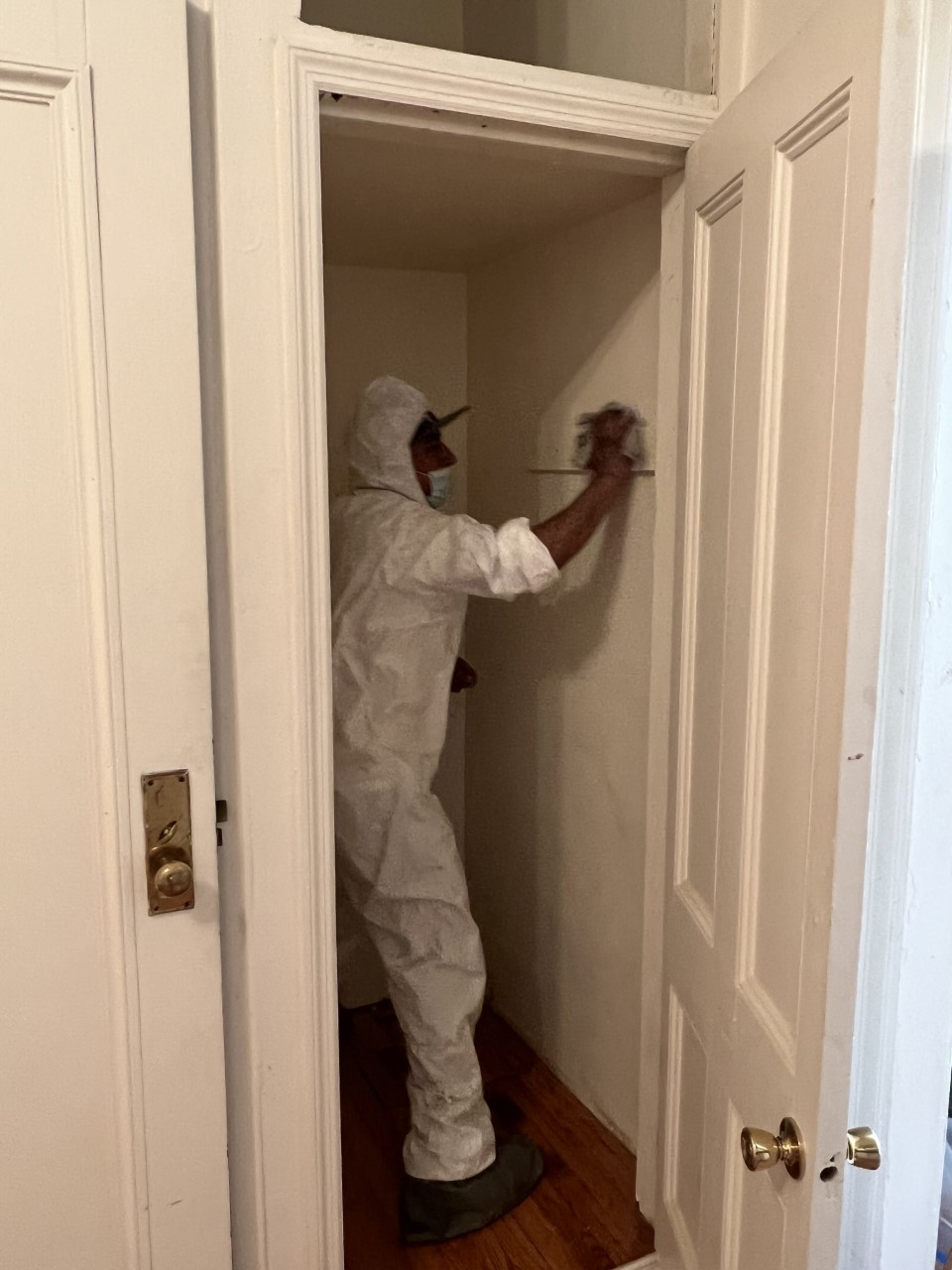Finest Practices for Guaranteeing Safe and Thorough Lead Offense Reduction
Attending to lead violation reduction needs a multi-faceted technique to make certain both safety and compliance. It's the final clearance procedure, entailing extensive examinations and lab testing, that genuinely confirms a lead-free setting, making sure lasting security. Just how do these practices adjoin to assure extensive lead abatement?

Preliminary Assessment
Performing a preliminary analysis is a vital primary step in lead infraction abatement. This phase includes a thorough examination of the building to identify the presence, degree, and certain areas of lead-based risks. Qualified experts, such as licensed lead examiners or take the chance of assessors, ought to execute a thorough website examination, using tools like X-ray fluorescence (XRF) analyzers to properly discover and determine lead focus in paint, dirt, soil, and water.
The evaluation must likewise consist of an evaluation of the building's background, previous reports, and any complaints or health and wellness concerns reported by residents - Lead Removal Contractors. Recording the searchings for diligently is essential, as these documents form the basis for developing a reliable reduction technique. A detailed assessment additionally involves tasting and research laboratory evaluation, which are crucial to verify the visibility of lead and overview succeeding actions
Additionally, it is critical to interact the results transparently to all stakeholders, consisting of homeowner, renters, and governing authorities. By guaranteeing that the preliminary analysis is performed with accuracy and rigor, experts can lay a strong foundation for a targeted and efficient lead reduction procedure, eventually securing public health and making certain compliance with regulative requirements.
Correct Control
Appropriate containment is essential to avoid the spread of lead impurities throughout reduction activities. Successfully handling containment minimizes the threat of lead dust and debris migrating to non-work locations, therefore securing both the setting and people outside the instant job area.

Normal evaluations of the containment area are needed to look for violations or weak points in the barrier. Any kind of recognized issues should be quickly dealt with to keep the honesty of the containment. By sticking to these techniques, reduction tasks can properly control lead contamination and minimize involved health risks.
Employee Defense
Making sure worker defense is critical during lead abatement tasks to protect against work exposure to dangerous lead bits. Vital measures include the use of personal safety equipment (PPE) such as respirators, gloves, and full-body matches especially designed to obstruct lead dirt and fumes. Employees should go through thorough training on the appropriate use and maintenance of PPE, consisting of in shape screening for respirators to ensure maximum efficiency.
Design controls, such as neighborhood exhaust air flow systems, are important in decreasing air-borne lead concentrations in the workplace. Management controls ought to also be applied, including restricting the period of exposure and turning employees to minimize private exposure times. Regular medical security and biological surveillance are indispensable for very early discovery of lead absorption, enabling prompt intervention and treatment.
Additionally, establishing a purification method is vital. Workers should comply with rigorous purification treatments prior to breaks and at the end of their shift to protect against lead dirt from being brought outside the workspace. This consists of extensive hand and face washing with lead-specific cleaner and transforming out of contaminated garments.
Careful Cleanup
Preserving a secure workplace extends beyond worker defense and includes thorough cleanup to guarantee lead fragments are thoroughly gotten rid of from the website. The process of careful cleaning is essential in protecting against the recontamination of the mellowed out location and guarding both current and future residents.
To achieve a comprehensive clean-up, all job areas must be systematically sanitized. This entails making use of specialized HEPA (High-Efficiency Particulate Air) vacuum cleaner cleansers and wet-wiping techniques to catch and remove great lead dust that might have chosen surfaces. It is essential to clean all straight surfaces, including floorings, window sills, and countertops, along with vertical surfaces that may have trapped lead fragments.
Employees need to put on proper personal protective tools (PPE) throughout clean-up to stay clear of exposure to recurring lead dust. Made use of cleaning materials such as wipes, sponges, and wipe heads should be gotten rid of in conformity with contaminated materials disposal policies.

Final Clearance
Final clearance is the crucial concluding stage of lead abatement that identifies whether the site is safe for reoccupation. This vital step includes extensive evaluation and screening to verify that all lead dangers have been successfully eliminated.

Final clearance testing not only safeguards future passengers however likewise makes certain conformity with local, state, and federal guidelines. Furthermore, it works as a documented recognition of the reduction contractor's adherence to market ideal methods. Guaranteeing a detailed and successful last clearance is important in protecting public wellness and fostering trust fund in the reduction procedure.
Final Thought
Making certain secure and comprehensive lead offense reduction demands a diverse approach encompassing preliminary assessments with advanced discovery techniques, effective containment methods, stringent employee security methods, and precise visit this web-site cleaning treatments. The final clearance stage, including in-depth assessments and laboratory testing, is essential to validate conformity with EPA requirements. Adherence to these best practices assures a secure setting for residents, alleviates wellness dangers, and supports governing needs, consequently promoting public health and security in lead-affected areas.